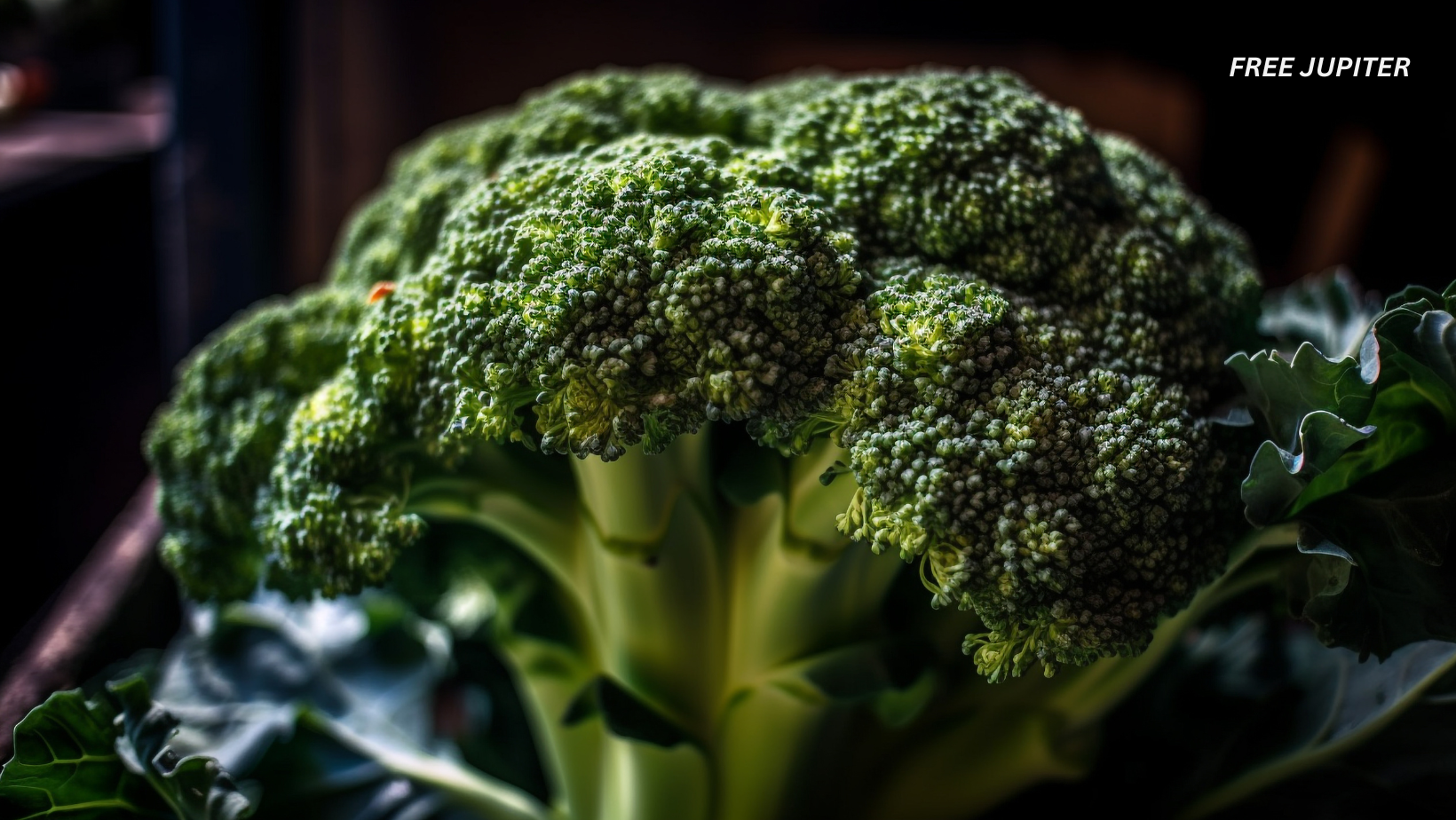Friendly Note: FreeJupiter.com shares general info for curious minds 🌟 Please fact-check all claims—and always check health matters with a professional 💙
When most people think of broccoli, they probably picture it steamed, stir-fried, or smothered in cheese. It seems like such a wholesome, down-to-earth vegetable—something that’s been plucked straight from nature’s pantry. But here’s the twist: broccoli, despite its earthy vibe, doesn’t grow in the wild. Not now. Not ever.
This verdant veggie is actually a human invention, sculpted through centuries of careful and deliberate cultivation. Yes, that floret on your fork is the product of old-world plant matchmaking—an example of what humans can accomplish without a single lab coat in sight.
So, how did we go from wild cabbage growing on salty cliffs to crisp green bunches in grocery aisles? Let’s dive into the curious and clever story of how humans created broccoli—and why it’s such a nutritional triumph.
The Ancient Roots of a Modern Superfood
Broccoli’s story begins not in a lab, but along the rugged coastlines of the Mediterranean. That’s where its wild ancestor—Brassica oleracea—grew freely among the rocks, battered by sea spray and sun.
This wild cabbage wasn’t particularly appetizing. It was tough, slightly bitter, and nothing like the tidy vegetables we’re used to seeing today. But early farmers saw something more than a scraggly plant. They saw potential.
Over 2,000 years ago, ancient Mediterranean communities—particularly in what’s now Italy—started taking a closer look at this unassuming green. Some plants had thicker stems. Others sprouted more compact flower heads. A few had a gentler, less bitter flavor.
Instead of settling for what nature gave them, these early agriculturists did something remarkable: they began selecting the plants with the best traits and replanting their seeds. Over many generations, they gradually shaped the plant into something new—something that eventually evolved into broccoli.
This slow but purposeful tweaking is what scientists now call selective breeding—and it’s one of the oldest tricks in agriculture.
Read more: Nutrition Experts Name the Healthiest Sandwich Bread—And They All Said The Same Thing
What Exactly Is Selective Breeding?
In simple terms, selective breeding is like nature with a little human encouragement. It involves choosing plants (or animals) with the most desirable traits and breeding only those individuals over time. The goal? To amplify those traits in future generations.
For broccoli, early farmers favored traits like:
- Thicker, edible stems
- Larger, more compact flower buds (which we now eat as florets)
- A milder taste
- Better texture when cooked
This is not the same thing as genetic modification (GMO). Selective breeding is an age-old practice based entirely on natural reproduction. There are no test tubes, no genes being inserted or spliced in a lab. It’s all about patience and observation—skills ancient farmers had in abundance.
In fact, almost everything we eat today—wheat, corn, tomatoes, bananas—has been altered by humans through selective breeding at some point in history. Broccoli just happens to be one of the most dramatic transformations.
From Wild Weed to Roman Favorite
By around the 6th century BCE, the first proto-broccoli had begun to take shape in the hands of skilled Roman agriculturists. These early versions of broccoli weren’t identical to the ones we eat today, but they shared key features: edible stalks, clustered green flower heads, and a taste that could be tamed with olive oil and spices.
The Romans were enthusiastic about broccoli. It became a popular vegetable in their cuisine—served cooked, raw, or pickled. The Roman naturalist Pliny the Elder even mentioned a broccoli-like plant in his writings, praising its health benefits and culinary versatility.
The love for broccoli remained strong in Italy for centuries, and the vegetable evolved further there as generations of farmers continued to refine its structure and flavor.
Broccoli’s Grand Tour: From Italy to the World
Despite its Roman roots, broccoli didn’t spread quickly across the globe. For many centuries, it remained a local Italian treasure. It wasn’t until the 16th century that broccoli started appearing in France and England—thanks in part to increased trade and exploration during the Renaissance.
However, it took a while to catch on. Early adopters in England nicknamed it “Italian asparagus,” and many people weren’t quite sure what to do with it.
It wasn’t until the early 20th century—specifically the 1920s—that broccoli began to gain ground in the United States. Italian immigrants brought it with them, planting it in home gardens and small farms. Eventually, it found its way into mainstream American grocery stores and restaurant menus. By the mid-20th century, broccoli was a staple vegetable in Western diets.
Read more:Your Body May Be In Better Shape Than You Think, According To Research
Nutritional Gold: What Makes Broccoli So Good for You?
While its origin story is intriguing, broccoli’s real superpower lies in its nutrition. Thanks to centuries of careful cultivation, it’s now one of the healthiest vegetables you can eat.
Here’s what’s packed into those little green trees:
- Vitamin C – Boosts the immune system and acts as an antioxidant.
- Vitamin K – Crucial for bone health and blood clotting.
- Fiber – Supports digestion and keeps you feeling full.
- Folate – Important for cell growth and particularly vital during pregnancy.
- Potassium – Helps maintain healthy blood pressure.
- Sulforaphane – A powerful plant compound being studied for its anti-cancer properties.
Modern broccoli is more nutrient-dense than its wild ancestor, all thanks to generations of farmers enhancing its flavor and health benefits without even realizing the science behind it.
Did You Know? Broccoli Has Siblings
Broccoli isn’t an only child. It shares its origin story with a whole bunch of other familiar vegetables. In fact, many of your favorite leafy greens and crunchy sides all came from the same plant: Brassica oleracea.
By focusing on different parts of the plant, farmers created a kind of botanical family reunion:
- Cauliflower – Bred for its large, pale flower head.
- Kale – Grown for its big, leafy greens.
- Brussels sprouts – Focused on bud growth along the stalk.
- Cabbage – Developed for its tightly wrapped leaf head.
- Kohlrabi – Cultivated for its swollen stem.
- Broccolini – A more recent hybrid between broccoli and Chinese broccoli.
Think of it as nature’s version of Lego blocks. Farmers took the same base plant and rearranged its features in clever ways to create entirely new vegetables.
Is Broccoli Really “Natural”? The Nature of Man-Made Plants
So, is broccoli natural or not? It depends on how you define “natural.”
On one hand, broccoli wasn’t found in the wild and doesn’t exist without human intervention. On the other hand, it wasn’t artificially designed in a lab either. It grew out of traditional, low-tech farming practices—just with a little extra guidance from patient farmers who knew what they were doing.
It’s a product of nature and nurture.
Today, broccoli is as “natural” as an apple or a tomato. All have been touched by human hands over centuries. But they’re still grown in soil, bathed in sunlight, and bursting with life.
Broccoli’s Legacy: A Victory for Ancient Ingenuity
At a glance, broccoli may seem like a simple vegetable. But behind its modest appearance lies a rich story of agricultural innovation. It’s a shining example of how early humans didn’t just gather food—they shaped it.
From wild cabbage clinging to Mediterranean cliffs to the health food aisles of the modern supermarket, broccoli has journeyed across time, continents, and cultures. Its creation is a reminder of what we can achieve through observation, persistence, and a bit of green-thumbed creativity.
Read more: What You Need To Avoid If You Have High Blood Pressure, According to Dietitians
Final Bite: What to Remember About Broccoli
Let’s recap the highlights of this very green tale:
🥦 Broccoli is 100% man-made, created through centuries of selective breeding from wild cabbage.
🥦 It’s not a GMO. Broccoli’s development didn’t involve gene splicing—just old-fashioned farming.
🥦 It’s incredibly good for you, loaded with essential vitamins, minerals, and protective plant compounds.
🥦 It has famous plant siblings like cauliflower, kale, cabbage, and Brussels sprouts—all from the same ancestral plant.
🥦 It proves humans can shape nature, without needing a lab—just patience, wisdom, and generations of practice.
So the next time someone pushes their broccoli to the edge of the plate, maybe share a bit of its story. Because once you know the journey it took to get there—from the salty cliffs of ancient Rome to your fork—it’s kind of hard not to appreciate it.
And who knows? You might just find it tastes a little better, too.
Disclaimer: The information in this article is for general informational purposes only and is not medical advice. We are not doctors, and this website is run as a family hobby project. Always consult a qualified healthcare professional before making decisions about your health. Please fact-check any claims and use this content as a starting point, not a substitute for professional guidance.










